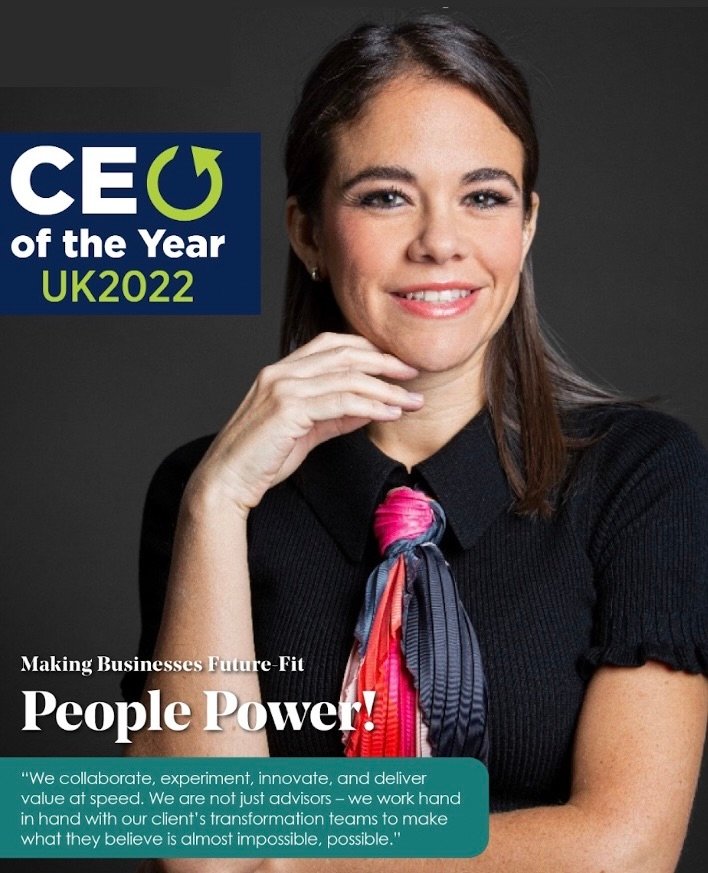The business world, like the jungle, is filled with volatility, competition, and uncertainty. It is a place of abundant possibilities, but also of danger, where the weak and slow are devoured. Within the jungle, there is a multitude of animals- and organizations. Some large, some small, some strong, some weak.
The traditional business model can perhaps best be described as an elephant. Often a business with power and plenty of capital behind it, as well as a long rich history. But like an elephant with its slow, lumbering steps, the traditional model, sometimes referred to as a hierarchical model, takes time to maneuver. A 180-degree turn takes a little back and forth before things can once again get going.
The concept of organizational agility is akin to the prowling leopard in the business jungle. Just as the agile model is exemplified by the nimble movements of the leopard, businesses embracing organizational agility demonstrate a capacity to swiftly adapt to the dynamic and unpredictable nature of the corporate landscape. In contrast to the traditional hierarchical model, characterized by the ponderous steps of an elephant, organizational agility enables businesses to navigate with speed and flexibility.
Thus, we find ourselves in the business jungle with two dominant creatures competing for supremacy: the traditional elephantine organization, and the agile, leopard-like business.
But which will ultimately prevail in this business jungle, the Elephant, or the Leopard?
The Elephant- The Traditional Business Model
The vast majority of businesses currently in operation around the world would be considered elephants. Operating under a traditional business model, these companies have experienced extraordinary success over the last century. Typified by a pyramidal structure that was first set out more than 150 years ago, this model has gone on to become the blueprint of how we do business.
This model calls for its employees to be divided according to divisions, departments, or functions. Those within departments are responsible for a specific organizational process, such as finance for budgeting, reporting or human resources for recruiting, developing, or training people. There is little communication or interaction between areas or functions. It is a model where decisions are centralized at the top and can be painfully slow to migrate south. People within a traditional model typically work individually as part of something much bigger.
This pragmatic, inflexible approach can have negative knock-on effects that reach all the way to the consumer – the very person you need to keep happy. Functional silos act against the ability to create end to end, exceptional customer experiences. They hamper collaboration and speed which in turn restricts innovation, experimentation, and flexibility. Quite simply it is becoming inefficient for the requirements, characteristics, and opportunities of the world today – and most importantly, the world of tomorrow.
The Leopard- The Agile Business Model
An Agile Model is something quite different. The word Agile comes from the Latin agilis meaning to move easy, quickly and nimbly – the image of the leopard prowling silently through the jungle is a perfect example. While the leopard’s eyes may be fixed on a point ahead of it, its senses are acting as a 360-degree radar. The slightest of changes and the leopard can react instantly.
The Agile model is often represented as a circular form, rather than a pyramid. The organization of people at work is done through teams often called scrums or squads, which when grouped together into a certain category or product form a tribe. These Agile Teams are multi-functional, self- organized, empowered to take decisions and responsible end-to end for their product or category. Companies like Spotify, Netflix or Google are all Leopards. This model has become the preferred one of companies being born within the center of innovative technology in Silicon Valley, but now it seems to be catching fire all around the world.
Organizational Agility: The key to survive
In the business jungle, only the strong survive – the weak or outdated can be easily challenged and usurped. No empire lasts forever – ask the Egyptians, the Romans, the Mayans. This explains why every day we see more Elephants -big and large corporations- desperately wanting to turn themselves into Leopards. But if large corporations were nothing more than big, slow, dumb Elephants, then an Agile Transformation would be the only viable solution for survival.
The reality is, Elephants are not simply slow lumbering creatures. Their strength and experience can give them a competitive advantage and their brute power – which can often equate to capital – places them in an envious position. Large corporations sit on more cash reserves than most venture capitalists could ever dream of, while their resources and assets used in the right way could result in untamed innovation.
And this does not just work one way. Small, agile companies will experience something similar but in the opposite direction. Start-ups are typically striving to scale their businesses as quickly as possible, but in the rush to do so, they come into conflict with the need to acquire at least a minimum amount of elephant capabilities. While elephants may not be always entirely suited for the 21st Century, their experience has served them well – and we can all learn something from them.
There is one thing that is clear: In this ever-evolving business jungle, Organizational Agility is not just a choice, but a necessity for survival. So, what could be the Organizational Model for the 21st century?
The Eleph-opard- A Future-Fit Business Model
A new animal in the jungle is needed. However, the laws of nature dictate that an Elephant can never become a Leopard – no matter how much it might desire it. Likewise, in business, large organizations cannot return to a start-up state, Nevertheless, they can acquire certain capabilities to achieve higher levels of speed and agility. Everyone is speaking about the start-ups as the companies of the future, but what if there was a third option? What if Elephants could adopt Leopard capabilities? What if there was a new animal moving through the thick jungle wall? Let’s call this animal, an Eleph-opard.
The Eleph-opard is a new approach towards Organizational change. It is about re-configuration rather than transformation. One that challenges the long-standing orthodoxies about both the hierarchical and agile model, while bringing a more nuanced, effective, and achievable approach. It is a common ground between the Elephant and the Leopard.
The Eleph-opard promotes the idea of a ‘dual operating system’, where traditional hierarchical structures are combined with more adaptable, network-like structures. This allows for both stability and flexibility within an organization, as well as better communication and faster decision-making. Eleph-opards, can enjoy some of the benefits of hierarchical models of stability and firmness and can marry them with the benefits of an agile model – with flexibility, adaptiveness, cross-functional collaboration, innovation, and speed.
Eleph-opards are future-fit organizations who can successfully balance the extremes of the agile and hierarchical models and can expertly navigate the choppy waters between the two. We believe that Eleph-opard model could be the destination state for modern organizations and not simply a temporary holding state until becoming purely agile. Forget having to choose between the hierarchal model or the agile model – combine their strengths and choose both. It is time to introduce a new animal to the jungle… The Eleph-opard.



